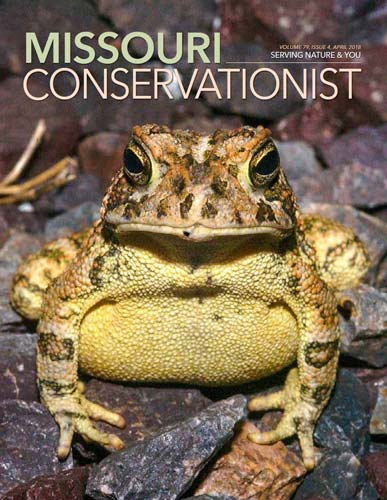Each month, we highlight research MDC uses to improve fish, forest, and wildlife management.
Resource Science
Light Detection and Ranging (LiDAR)
February, Smithsonian magazine revealed that researchers using laser-mapping technology had discovered more than 60,000 Mayan structures in the Guatemalan jungle.
Turns out laser-mapping, also known as light detection and ranging (LiDAR), can help MDC researchers and biologists detect hidden clues about land and waterways here in Missouri.
For example, Resource Scientist Frank Nelson and other wetland biologists use LiDAR imagery to plan wetland restoration projects.
“LiDAR maps helped us better understand chronic challenges with flooding around Schell-Osage Conservation Area. We were able to see higher and dryer ridges, along with low spots where water might flow during the next flood. This enhanced view helped us evaluate potential solutions.”
Once costly, LiDAR has evolved over the last 10–15 years, becoming more affordable and more available across the state. Currently, it allows users to look at and through vegetation to the ground below.
Foresters can calculate fuel loads and timber stand structure. Hydrologists can detect conditions and issues in a watershed. Ecologists can use LIDAR maps to determine certain natural communities and the location of different landforms, which help identify where restoration efforts are most likely to succeed.
For wetland work, LiDAR is a useful tool to estimate water depths and acres of flooded habitats. “It provides a sharable record, and it helps flatten the learning curve,” Nelson said.
It also makes collaboration between agencies more effective. “LiDAR provides another data set agencies can use to make better decisions with taxpayer dollars,” Nelson said.
LiDAR at a Glance
How it Works
A pulsed laser sensor attached to a plane detects surface features, allowing the instrument to build complex maps.
Key Missouri GIS/LiDAR Partners
These and other partners have been working to collect LiDAR images of every county in Missouri.
- Natural Resources Conservation Service
- U.S. Geological Survey
- U.S. Army Corps of Engineers
This Issue's Staff
Associate Editor - Bonnie Chasteen
Staff Writer - Larry Archer
Staff Writer - Heather Feeler
Staff Writer - Kristie Hilgedick
Staff Writer - Joe Jerek
Creative Director - Stephanie Thurber
Art Director - Cliff White
Designer - Les Fortenberry
Designer - Marci Porter
Photographer - Noppadol Paothong
Photographer - David Stonner
Circulation - Laura Scheuler






















